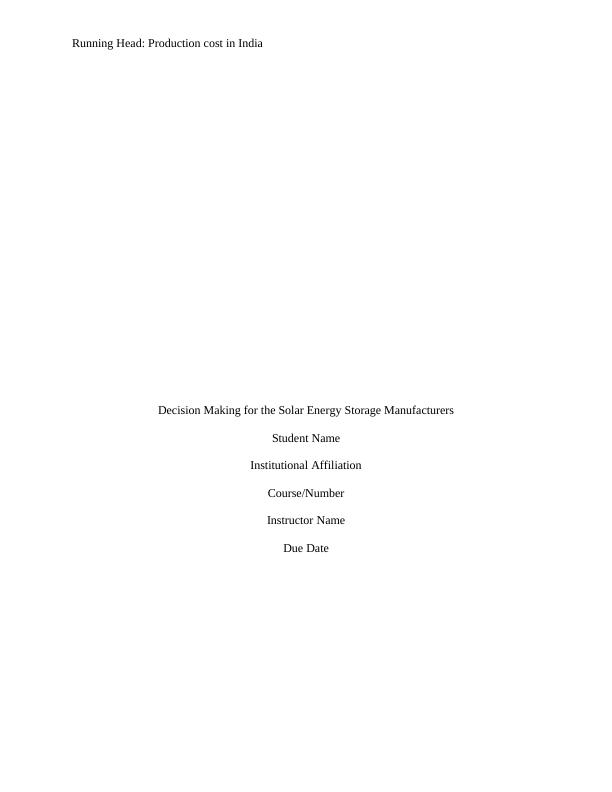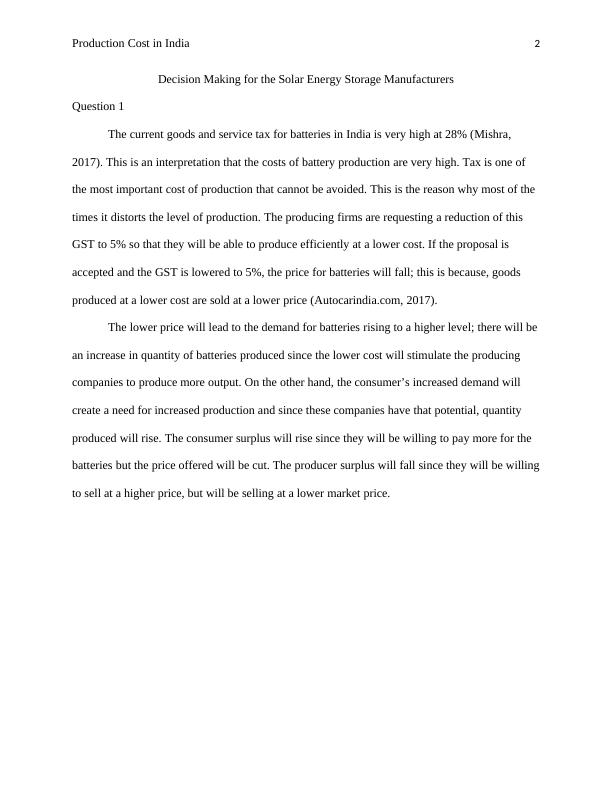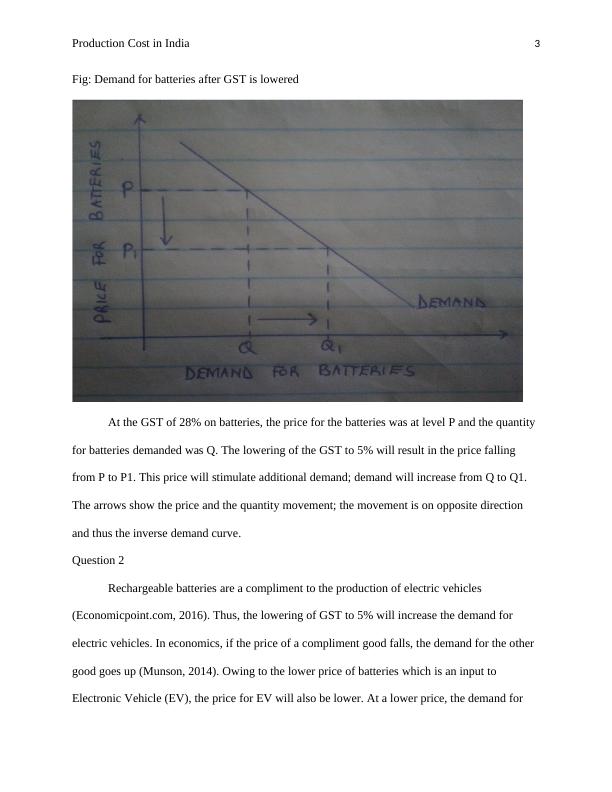Ask a question from expert
Production cost in India | Report
7 Pages1279 Words130 Views
Illinois Central College
Economics (ECON102)
Added on 2020-02-24
About This Document
The document discusses the manufacturing costs in India, as well as the decision-making process for solar energy storage manufacturers. The study includes a variety of topics that are pertinent to this report, such as analyzing the influence on market outcomes in terms of price, quantity, consumer and producer surplus, and examining the impact of cutting the GST on batteries from 28% to 5% on India's petrol car market.
Production cost in India | Report
Illinois Central College
Economics (ECON102)
Added on 2020-02-24
BookmarkShareRelated Documents
End of preview
Want to access all the pages? Upload your documents or become a member.
MGT 448 - Economics for Sustainable Business
|8
|1550
|17
Economics For Sustainable Business Report GST In Indian Economy
|8
|1506
|236
GST Levy on Batteries 7 Running Head: GST Levy on Batteries 7 Running Head: GST Levy on Batteries 7 Running Head: GST Levy on Batteries 7 Running Head: GST Levy on Batteries 7 Running Head: GST Levy o
|7
|1277
|171
ECONOMICS GST Hike in Battery
|6
|1320
|266
BU1003 - GST on Solar Panel Batteries
|9
|1478
|67
Macroeconomic Principles 6 Running Head
|7
|1601
|361


